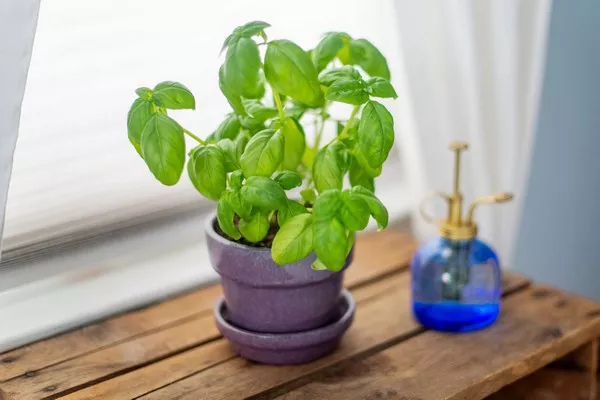Controlling pests and diseases in plants is a critical aspect of successful gardening and agriculture. Pests and diseases can wreak havoc on crops, leading to reduced yields and economic losses. In this article, we will explore effective strategies and techniques to control pests and diseases in plants, ensuring healthy and thriving vegetation.
Understanding the Threat: Pests and Diseases in Plants
Before diving into control methods, it’s essential to grasp the nature of the threat. Pests and diseases in plants encompass a wide range of organisms, from insects and mites to bacteria and fungi. These threats can undermine plant health and productivity, necessitating proactive measures to mitigate their impact.
Implementing Preventative Measures to Control Pests and Diseases in Plants
One of the primary approaches to control pests and diseases in plants is prevention. By taking proactive steps, gardeners and farmers can reduce the likelihood of infestations and infections. Start by selecting disease-resistant plant varieties and ensuring proper plant spacing to minimize overcrowding, a condition that can facilitate the spread of diseases.
1. Regular Monitoring and Early Detection
Control pests and diseases in plants effectively by implementing a routine monitoring system. Regularly inspect your plants for signs of trouble, such as wilting, discoloration, or unusual growth patterns. Early detection allows for swift action, preventing the escalation of pest or disease problems.
2. Integrated Pest Management (IPM) Strategies
Integrated Pest Management (IPM) is a holistic approach to control pests and diseases in plants. It combines various methods to achieve sustainable, long-term results while minimizing the use of chemical pesticides. Components of IPM include biological control, cultural practices, and chemical interventions when necessary.
3. Biological Control
Biological control involves the use of natural predators or parasites to manage pests. For instance, introducing ladybugs to your garden can help control aphids. Utilizing beneficial nematodes or releasing parasitic wasps can be effective in managing specific pests while maintaining ecological balance.
Cultural Practices for Pest and Disease Management
Cultural practices play a crucial role in controlling pests and diseases in plants. Crop rotation, for instance, can disrupt the life cycle of certain pests and diseases, making it harder for them to establish themselves. Additionally, proper irrigation techniques, such as drip irrigation, can reduce the humidity levels that favor disease development.
1. Chemical Interventions
While minimizing chemical pesticide use is a goal of IPM, there are situations where it becomes necessary to control pests and diseases in plants effectively. When using chemicals, follow safety guidelines meticulously, and choose products with the least environmental impact. Always consider non-chemical alternatives first and use chemicals as a last resort.
2. Maintaining Soil Health for Disease Prevention
Healthy soil is the foundation of healthy plants. Soil that is rich in organic matter and well-balanced in nutrients can help plants resist diseases. Employ practices like mulching to regulate soil temperature and moisture, which can reduce the likelihood of certain fungal diseases.
3. Proper Sanitation Practices
Good hygiene is essential to control pests and diseases in plants. Remove and dispose of diseased plant material promptly to prevent the spread of pathogens. Clean and disinfect gardening tools and equipment regularly to avoid inadvertently transferring pests or diseases from one area to another.
4. Educating Yourself and Staying Informed
Knowledge is a powerful tool in the battle to control pests and diseases in plants. Keep yourself informed about the specific pests and diseases that affect your region and the plants you grow. Local agricultural extension services and online resources can be valuable sources of information.
5. Utilizing Natural Predators
Incorporating natural predators into your pest control strategy can be highly effective. For instance, birds such as sparrows and bluebirds can help control insect populations. Building birdhouses or providing food sources like native plants can attract these feathered allies to your garden.
Effective Disease Management for Pest and Disease Management
Disease management requires a multifaceted approach. Practice good crop rotation to prevent the buildup of soil-borne pathogens. Select plants with genetic resistance to common diseases, and apply organic fungicides when needed. Maintain proper air circulation and spacing between plants to reduce humidity and minimize disease pressure.
Adapting to Changing Conditions
Climate change can bring about shifts in pest and disease patterns. Stay vigilant and adapt your control strategies accordingly. Warmer temperatures and altered precipitation patterns may create new challenges, making it crucial to stay informed and flexible in your approach to control pests and diseases in plants.
Conclusion
Effectively controlling pests and diseases in plants is essential for maintaining the health and productivity of your garden or farm. Implementing preventative measures, practicing Integrated Pest Management (IPM), and staying informed about the latest developments in pest and disease management are key steps towards success. By taking a proactive and holistic approach, you can ensure that your plants thrive while minimizing the impact of pests and diseases in your growing environment.


